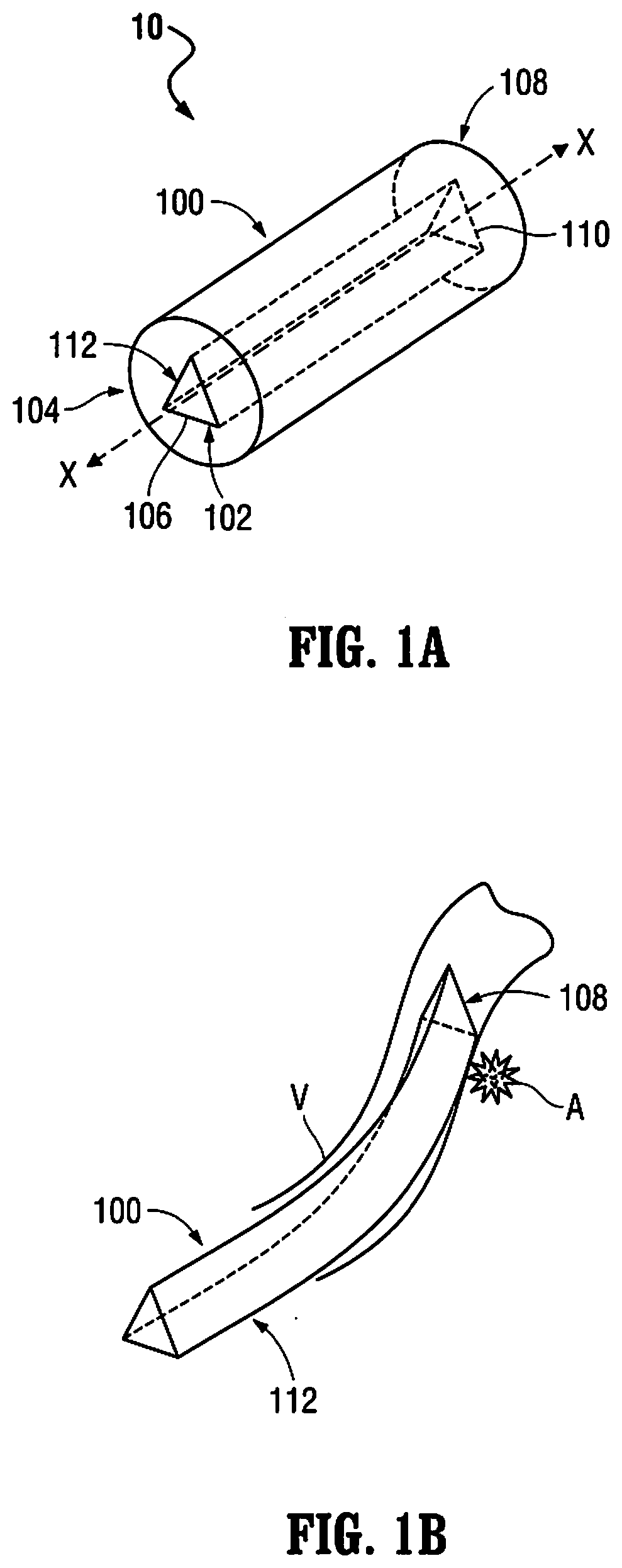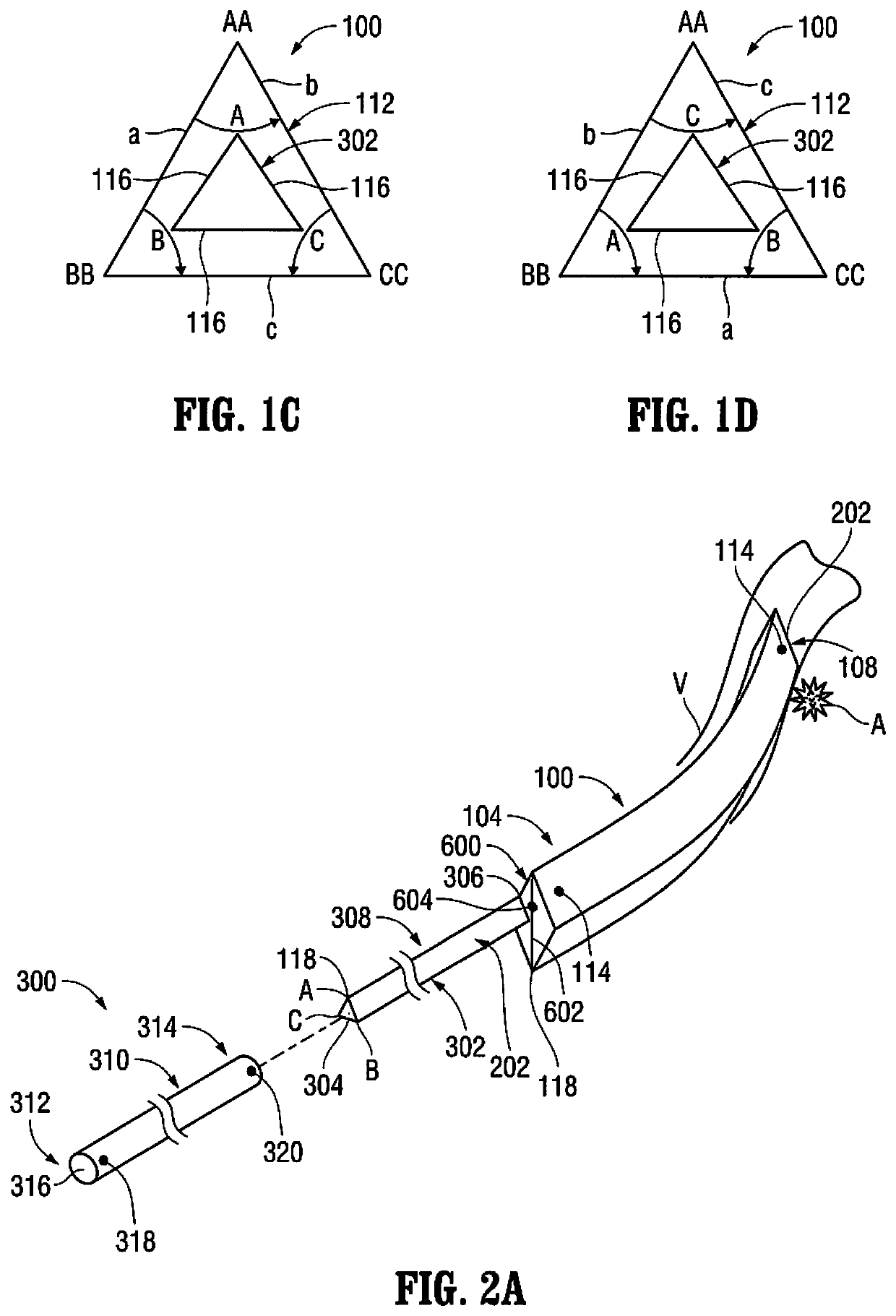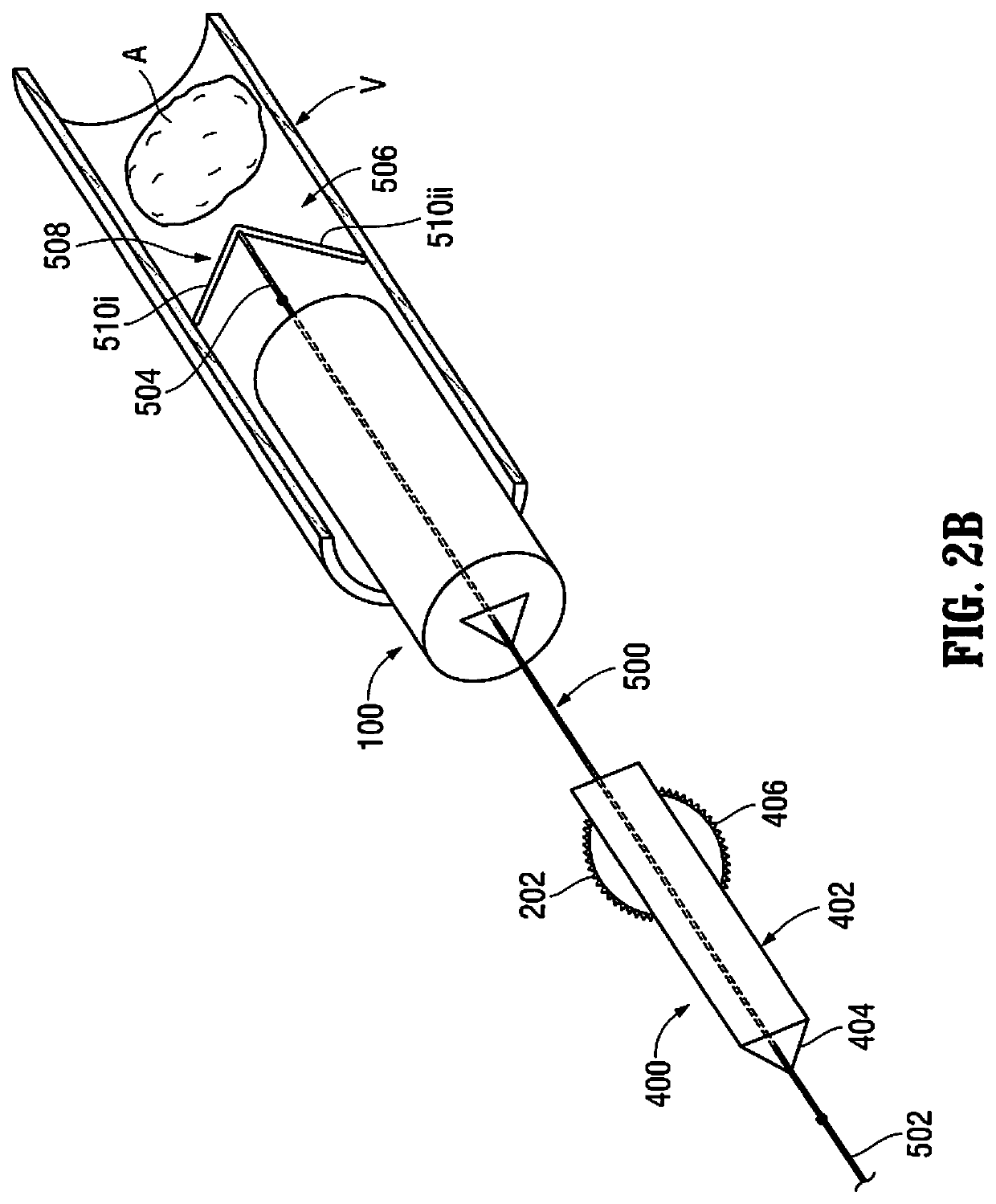Orientable intravascular devices and methods
a technology of intravascular devices and methods, applied in the field of medical devices, can solve the problems of prolonging procedure times, stent rotation, and difficult to properly orient known devices and methods, and achieve the effect of facilitating proper positioning of side holes
- Summary
- Abstract
- Description
- Claims
- Application Information
AI Technical Summary
Benefits of technology
Problems solved by technology
Method used
Image
Examples
Embodiment Construction
[0214]The embodiments of the device and variants of the device of the present disclosure are set forth with reference to the above drawings.
[0215]Referring to FIG. 1A, the delivery catheter 100 is illustrated. As discussed above, the aforementioned lumen 112 extends through the delivery catheter 100 and includes a (first) non-circular transverse (lateral) cross-sectional configuration. Although the transverse (lateral) cross-sectional configuration of the lumen 112 is shown as being (generally) triangular in FIG. 1A, a variety of other non-circular transverse (lateral) cross-sectional configurations are also contemplated by the present disclosure including, for example, rectangular, pentagonal, hexagonal, octagonal, square-shaped, ovate (elliptical), stars-shaped, arrow-shaped, etc., as mentioned above. The lumen 112 is configured to (slidably) receive an (elongated) medical device, such as, for example, the pusher 302 (FIG. 2A) of the packaging catheter 300, the balloon catheter 40...
PUM
 Login to View More
Login to View More Abstract
Description
Claims
Application Information
 Login to View More
Login to View More - R&D
- Intellectual Property
- Life Sciences
- Materials
- Tech Scout
- Unparalleled Data Quality
- Higher Quality Content
- 60% Fewer Hallucinations
Browse by: Latest US Patents, China's latest patents, Technical Efficacy Thesaurus, Application Domain, Technology Topic, Popular Technical Reports.
© 2025 PatSnap. All rights reserved.Legal|Privacy policy|Modern Slavery Act Transparency Statement|Sitemap|About US| Contact US: help@patsnap.com



